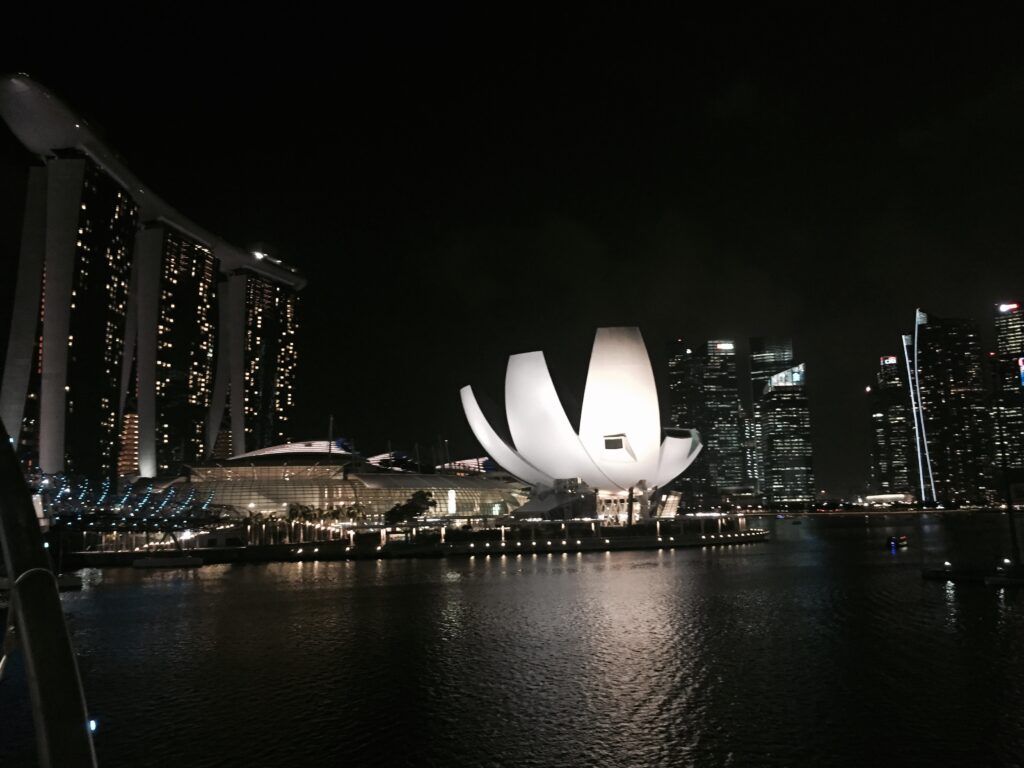No sooner had I landed in Singapore and I was through the world’s best airport, Changi, and in a new Mercedes Benz taxi to my hotel near City Hall. After a quick check-in, my colleague and I stopped by the Sidewalk hawker food stalls for a drink and made our way to a friend’s new restaurant, Artemis, overlooking Marina Bay and the spectacular Sands hotel.
Hong Kong vs. Singapore
Typical of a Saturday night in Singapore, our group was made up of a Swiss investment banker from Credit Suisse, a Columbian risk manager from UBS, a Hong Kong Chinese advertising executive from Doremus and a Japanese executive from the Bank of Japan.
We tucked into a delightful meal and conversation. The inevitable comparison between Hong Kong and Singapore, arch rivals, took centre stage. According to the Economist Intelligence Unit, Hong Kong has slipped regarding livability due to social unrest from the Occupy Central movement. Housing costs continue to be an issue in both places. GDP growth rates are slightly higher in Singapore than Hong Kong (3.85% vs 2.93%). And while Singapore appears to be better to raise a family, it’s hotter and more humid at certain times of the year, and air pollution from Indonesia has made life hard for residents.
China’s slowdown affecting global engineering companies
On Sunday I meet with an old Singaporean colleague from ABB Group. He’s a 35-year veteran of the engineering giant, and I got to know him during my time living in Singapore, first with ABB, then while attending INSEAD on their Singapore campus. He loves to tell stories of how the company was built through the charisma of Percy Barnevik, the longtime Swedish CEO. Barnevik, known as Europe’s Jack Welch, was at the centre of a giant pension scandal during my time with ABB, a great learning experience for a communicator.
We talk about the slowdown in China and how it is affecting engineering companies. We also talk about the challenges of stamping out counterfeit goods, as well as the rise of Chinese competitors who are undercutting European and American companies in power and automation.
Pharmaceuticals growing as population ages
Rapid fire meetings dominate Monday. Breakfast with a pharmaceutical executive is punctuated by optimism for the sector in Asia. As the recent white paper from McKinsey indicates, Asia has an aging and growing population, which will increase the demand for healthcare. We also discuss the challenges of working with government-controlled media outlets in Singapore.
Later I meet a Canadian communications leader from a global bank who is working on a risk management program to help bring his company in line with new U.S. regulations. We discuss the recent victory of Justin Trudeau as prime minister of Canada and the climate change discussions in Paris, as well as their ramifications for the energy sector.
Weaving the threads together
Shortly later, I jump on a quick conference call with a British client to discuss a competency framework we are developing for his global communications team. He joins with a colleague in Sydney.
Next comes a meeting with a former client now transitioning to a new industry. He’s grappling with the challenge of learning the language of pharmaceuticals while slowly getting a handle on a new matrix organization.
In the evening I go for a run around Marina Bay to try and collect the threads of my thoughts. Can we weave these threads into a cohesive plan for our clients? What do they tell us about the direction of our business in Southeast Asia? Will they help us in Vietnam and Malaysia in early 2016?
To learn more about how our business can help yours, please contact the author.
Get Tantalus Alerts
Receive high-value actionable insights for management and communications professionals. We only send what matters most.

